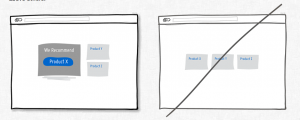Lead nurturing/keeping signed up users engaged is critically important, and since I’ve been consulting it’s been a recurring theme to my work with clients. Getting customers into the top of the funnel is only part of the game; keeping them engaged is the other half of being successful with a SaaS product and with any sort of a lead funnel.
I really enjoy setting up touchless sales nurturing programs. Today there are a few really great services that help marketing teams carefully, and automatically, keep users coming back to a service or moving along within a longer sales funnel. I came across a great piece on user engagement and it got a lot of Twitter love.
In addition to the various channels the author mentions, I’d add that using a personalization layer is key to keeping users from opting out of your nurturing program. Every single time I’ve ever tested a personalization layer, the message with personalization has out performed. For example, at Boundless, adding info about the subject matter that a student was studying, or their school name, etc resulted in better response rates, better engagement rates and happier users.
The best thing is that tools are out there to automatically help a marketer use personalization. There is really no reason to still be using a blast, one size fits all nurturing program if you are at scale.


